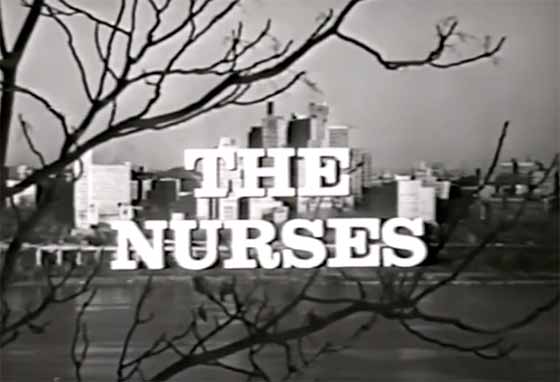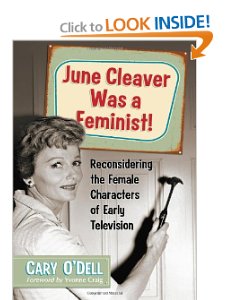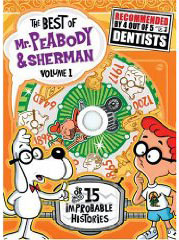





 |
 |
 |
 |
 |
 |
|
TV
on DVD/ / / / / / / / /
/ / / / / Punk Book/ / / / TV Shows on Blu-Ray/ / / / / Holiday
Specials on DVD / /
/ / / / Classic
Commercials / / / / / / Classic
TV Blog |
||||||
by CARY O'DELL As remarkable, ground-breaking and amazing as the series “Cagney & Lacey” (1982-1988) was, there was one thing it wasn’t. It was not TV’s first drama with two female leads.
It starred the actresses Shirl Conway and Zina Bethune. They are the only actors highlighted in the program’s opening credits. The series was created by talented TV producer Herbert Brodkin who had earned his chops producing various TV anthology programs (including “Playhouse 90”) and the legal drama “The Defenders” (1961-1965). “The Nurses” was set at the fictional Alden Hospital in New York City. In keeping with many medical dramas before and after it (from “Dr. Kildare” to “Marcus Welby” to even “Nurse Jackie”), the two main characters of “The Nurses” formed a pseudo-teacher-student bond. Senior Nurse Liz Thorpe (Conway) had the role of mentoring young, fresh-faced RN Gail Lucas (Bethune). Though many today believe TV from the 1950s and ‘60s was little more than pratfalls and dancing cigarette boxes, the dramas of the era were actually quite serious and topical in the situations that they addressed. Certainly “The Nurses” was.
In “The Prisoner,” a convicted criminal is treated at Alden…while he is facing the death penalty. In “Frieda,” a German nurse is discovered to have once taken part in Nazi medical experiments. In the episode “A Question of Mercy,” the installment explores the topic of euthanasia. And the episode “No Score,” is about a nurse fighting addiction while the installment “The Roamer” also takes on the issue of drug abuse.
As this series was centered on two female characters, not surprisingly, the series often explored so-called “women’s issues.” For example: In the episode, “Night Sounds,” Nurse Lucas is attacked and almost raped by a patient. She fights administration when they suggest she was “asking for it.” While tackling any subject matter, “The Nurses” was also sober and realistic in its depictions. The series—and its two lead characters—are always unglamorized; in the debut episode, Nurse Thorpe is seen massaging her aching feet. And regardless of the director, the series was always filmed in a blunt, cinema verite style, only heightening the program’s realism. Along with its weighty topics, during its lifespan, “The Nurses” also welcomed an impressive number of guest performers to its hospital halls. Some of them: Colleen Dewhurst, Elizabeth Ashley, Barry Morse, Louis Gossett, Beatrice Straight, Cicely Tyson, Gene Hackman, William Shatner (twice), George Segal, Joan Hackett, Inger Stevens, Ruby Dee, Kim Hunter, Susan Oliver, Lee Grant (also twice), and Elaine Stritch, among others.
Through all their storylines and guest stars, one thing remains constant in “The Nurses”: the respect it shows to its lead characters and their profession. The show has been called, “the single best depiction of the nursing profession ever on television.” And, watching episodes today, it’s easy to see why. While Nurse Lucas is sometimes depicted as over-eager and a little naïve, she is never ignorant. And Nurse Thorpe is the nurse we all want if we ever end up in the hospital: smart, efficient, compassionate, and always an advocate for her patients, even if it means standing up to one of the doctors. Furthermore, Nurse Thorpe (assumedly unmarried) is portrayed as neither a “spinster” or on the hunt for man. And her charge, Nurse Lucas, though she is sometimes seen going on a few dates, doesn’t seem anxious to walk down the aisle either. In fact, in one episode, out on a date with an intern, she informs him she’s “not playing the husband game!” Hence, we have here, two powerful working women images on the network airwaves long before “Mary Tyler Moore” and the aforementioned “Cagney & Lacey.” (Along with its depiction of women, the series also incorporated various African-American actors into to its regular cast, always depicted as respected professionals, not stereotypes.) Though never a major hit during the time of its airing, “The Nurses” was far from “underground.” Conway was Emmy nominated for her role on the series in season one and twice the show made the cover of “TV Guide.” It even had its own board game! It is quite plausible that the lack of lead male characters—at a time when it was mainly men/dads who commandeered the family TV—though might have prevented the series from truly breaking through to “hit” status. Certainly that was what the show’s producers thought: in season three, “The Nurses” got a not-so-subtle makeover and was renamed “The Doctors and the Nurses” and the program’s two male supporting characters--Michael Tolan as Dr. Alex Tazinski and Joseph Campanella as Dr. Ted Steffen—saw their roles beefed up in order to even out the gender dynamics. The change seemed to have little effect on the program’s fortune. It did, however, raise the ire of “TV Guide” who wrote at the time, “Out of sheer diplomacy, I think it should be called ‘The Nurses and the Doctors.’ The producers have made a lot of money out of the nursing profession, and it would have been more politic to give the nurses top billing.” After the revamp, the series, under any name, didn’t raise up in the ratings and CBS cancelled the series at the end of its third season. But that wasn’t the end of “The Nurses.” In an unusual move, the series got revamped again and became an afternoon soap opera on ABC. Once again titled “The Nurses,” it debuted in September 1965. The characters of Nurses Thorpe and Lucas were front and center again but, this time, played by different actresses. Mary Frickett played Nurse Thorpe; Melinda Plank assumed the role of Gail Lucas. As a daytime drama, the series ran until March of 1967. After its final cancellation (from primetime and daytime), “The Nurses” seemed to quickly fade from memory. One hour in length, not a Western or cop drama and only on the air (technically) for two years, “The Nurses” never found much—if any—after life in syndication. Thankfully, today, a few episodes can be found on Youtube, where the quality, integrity and historical importance of the series can be rediscovered. |
|
|
 |
|
TV
on DVD/ / / / / / / / /
/ / / / / Punk Book/ / / / TV Shows on Blu-Ray/ / / / / Holiday
Specials on DVD / /
/ / / / Classic
Commercials / / / / / / Classic
TV Blog |
|
Looking
for classic TV DVDs?/See below: |
||
| TV Commercials on DVD | Wrestling DVDs | Classic TV Books |